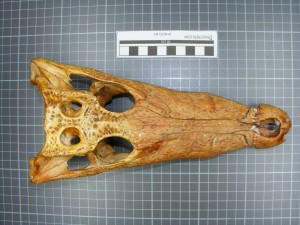My PhD consists of two parts. The first is investigating the dynamics of biodiversity across the Jurassic/Cretaceous interval about 145 million years ago. I want to see if when we consider the biases of the fossil record whether there was a ‘hidden’ mass extinction, and what were the ecological, physiological or environmental factors that correspond to this. This involves looking at turtles, birds, dinosaurs, marine reptiles, lizards, snakes, crocodiles and any other tetrapod group at the time – that’s anything with four feet, flippers or wings (see previous post for an update on all this jazz).

Evolutionary relationships of major tetrapod groups – many extinct, and many still with us today! Source.

